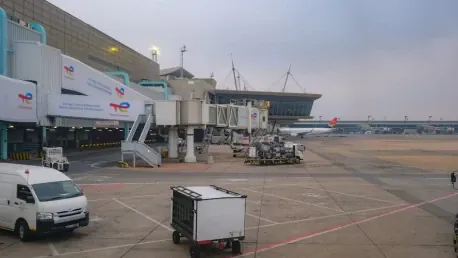Amazon Air Cargo’s recent decision to accept air cargo from third parties, including freight forwarders, has sparked a flurry of reactions from the logistics industry. The move, which aims to optimize Amazon’s air fleet, introduces new opportunities for third-party shippers, though concerns linger over the allocation of space during peak periods. In response, Amazon has assured stakeholders that advanced predictive technology will be employed to efficiently manage both Amazon’s own parcels and those of external customers, aiming to prevent potential conflicts.
Industry Concerns and Assurances
Predictive Technology and Space Management
Tom Bradley, Amazon Air Cargo’s global director, recently addressed the industry’s concerns regarding whether Amazon will prioritize its own parcels over third-party cargo during high-demand periods. Bradley assured that predictive technology would play a crucial role in avoiding conflicts between Amazon’s shipments and third-party cargo. This technology will enable Amazon to forecast its own volume needs accurately, thus making space allocations more predictable and reliable for external shippers. The company’s assurance points to a sophisticated logistics framework aimed at balancing its internal and external shipping obligations seamlessly.
Industry experts like Ram Menen have weighed in on Amazon’s strategic move, noting the differences between Amazon and traditional express carriers. Unlike these carriers, who prioritize their B2B shipments due to time-sensitive commitments, Amazon has the advantage of more control over its capacity. Menen suggests that Amazon could indeed guarantee space for third-party cargo by leveraging its predictive analytics capabilities. The company’s integration of advanced logistics technologies, combined with its control over shipping schedules, positions Amazon to offer consistent and reliable services to third-party clients.
Despite these reassurances, questions about Amazon’s capacity to meet market demands remain, particularly during high-demand periods out of Asia. For instance, Kuehne + Nagel, a global logistics company, relies on Amazon Air to move e-commerce traffic from China to the US via Honolulu. This example highlights the critical role Amazon’s capacity management plays in the broader logistics network. Joe Schwieterman from DePaul University emphasized that opening up Amazon Air to third-party traffic could provide significant market advantages, particularly if managed effectively. The ability to accurately predict and allocate space could set Amazon apart in the highly competitive air cargo market.
Regularized Schedules and Network Structures
Another major point of discussion is the evolution of Amazon Air’s operational framework, which has seen transitions from an irregular schedule to a more predictable and reliable one. This shift is a significant benefit to third-party shippers, as it allows better planning and commitments to regular shipments instead of relying on ad hoc arrangements. The establishment of a more regular schedule is indicative of Amazon’s growing sophistication in managing its air logistics network, which in turn benefits both the company and its external clients. This regularization of schedules is particularly crucial for businesses that depend on reliably timed shipments to meet their own operational needs.
The shift from a point-to-point network to a more hub-focused model further underscores Amazon’s strategic approach. Significant expansions at key hubs like Cincinnati-Northern Kentucky (CVG) have been instrumental in allowing Amazon to offer a more comprehensive range of shipping options. By concentrating logistics efforts around these hubs, Amazon has been able to streamline its operations, thereby improving efficiency and reliability. This hub-focused model not only optimizes Amazon’s own logistics but also provides substantial benefits to third-party shippers who can take advantage of these well-developed nodes for their own cargo needs.
The directional imbalance in Amazon’s flight routes has presented another opportunity for third-party cargo. Unlike other major carriers such as FedEx or UPS, Amazon often has considerable unused space on certain legs of its routes. This imbalance is more pronounced because of the clustering of Amazon’s logistics facilities around its hubs. For third-party shippers, these imbalances mean enhanced opportunities to access more space at potentially lower costs. This aspect of Amazon’s network, when effectively leveraged, could offer substantial advantages to businesses looking to optimize their shipping logistics.
Cargo Handling Capabilities and Operational Incidents
Handling a Variety of Cargo Types
Amazon Air claims that it has no constraints on the types of cargo it can handle, which includes dangerous goods, pharmaceuticals, and perishables. This expanded capability means that third-party shippers with specialized cargo needs can potentially find a reliable partner in Amazon Air. The ability to handle such diverse types of cargo is a significant advantage for many businesses that require specialized shipping solutions. Ensuring that these types of goods are transported safely and efficiently is a complex task, and Amazon’s assertion of its capabilities in this area highlights its commitment to maintaining high standards of service.
However, there is skepticism within the industry regarding the availability of charter services from Amazon Air due to its tight delivery schedules. The company’s established timetable, focused on meeting its own delivery commitments, might limit its flexibility in offering customized solutions like charters. This skepticism underscores a broader question about whether Amazon can balance its own operational demands with the needs of third-party clients. Addressing these concerns will be key to gaining the full trust and confidence of potential third-party partners, particularly those with specific or unique shipping requirements.
Recent Operational Challenges
Amazon Air Cargo’s recent move to start accepting air cargo from third parties, including freight forwarders, has caused a stir within the logistics industry. This strategic shift is designed to make the best use of Amazon’s air fleet, opening up new possibilities for third-party shippers. However, concerns have been raised about how space will be allocated during peak shipping periods. In response to these concerns, Amazon has reassured stakeholders that they will use advanced predictive technology to efficiently manage space for both Amazon’s parcels and those of third-party customers. This technology aims to prevent conflicts and ensure smooth operations. The move reflects Amazon’s growing ambition to enhance its logistics capabilities while also sharing resources with external clients. Though the decision introduces potential challenges, Amazon is confident that their technology and strategic planning will address any issues, promising a streamlined and efficient service for everyone involved.









